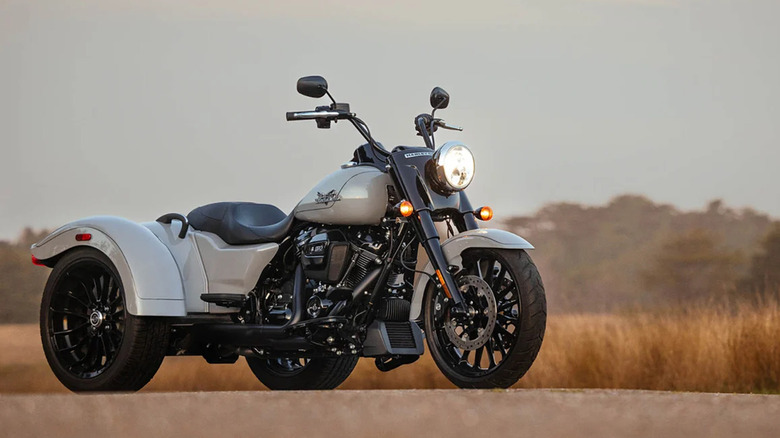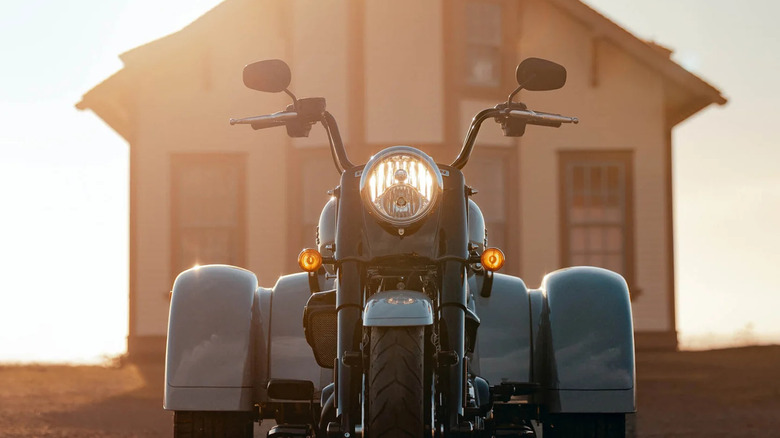About The 2024 Harley-Davidson Freewheeler Motorcycle
Harley-Davidson was founded in 1903 by William Harley and Arthur Davidson, who grew up as neighbors in Milwaukee and teamed up with Arthur's two brothers to begin crafting and selling motorized bicycles. Harley led the engineering end of things while Davidson handled sales and marketing. The company built its first motorcycles in a wooden shed in the Davidson family backyard, and Harley-Davidson's headquarters still occupies that same spot, although manufacturing is spread around the world. The brand has since grown to be one of the most recognizable in the country and makes many other products, although it sells more than 100,000 motorcycles a year in the United States alone.
Harley's current motorcycle offerings aren't limited to two-wheeled models, though. The 2024 lineup includes three trikes: the Road Glide 3, the Tri Glide Ultra, and the Freewheeler. The Freewheeler is the most affordable, with a base price of $31,999, and it comes in three color schemes: billiard gray, vivid black, and Alpine green. It includes a security system and cruise control as standard equipment.
The Freewheeler has advanced rider-assist features
The Freewheeler is propelled by Harley-Davidson's Milwaukee-Eight 114-cubic-inch V-twin engine that produces 90 horsepower and 119 pound-feet of torque. It's the same engine that drives the Softail FXDR 114, which topped our list of Harley's five fastest production bikes. That power is sent to the rear wheels via a chain drive and six-speed transmission with electric reverse, and reined in by 32-millimeter four-piston brakes in front and a 36-millimeter floating piston setup with an integrated parking brake in back. Lighting the way ahead of pilot and passenger is a 55-watt, 625 lumen low beam and 65-watt, 1,570 lumen high beam headlight enclosed in a single casing.
The Freewheeler has a handful of advanced ride control features to make cruising safer and smoother. A traction control system (TCS) and drag-torque slip control system (DSCS) are standard. DSCS monitors slip in the rear wheels and adjusts engine output accordingly, keeping the trike's grip firm on the road. The included anti-lock brakes are electronically linked for balance among the three wheels whether the pilot is using the foot pedal or hand lever, and the system adjusts for maximum tire contact when braking and cornering simultaneously.

